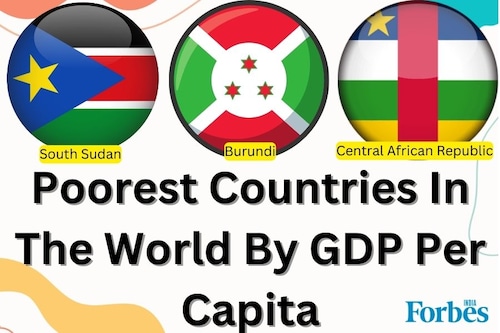Top 10 poorest countries in the world by GDP per capita [2025]
Want to know about the poorest countries in the world? This article lists the bottom ten economies by GDP per capita ranking 2025


Despite abundant global wealth, some countries continue to suffer in extreme poverty. Going by GDP per capita country-wise, this article lists the poorest countries in the world in 2025. Before getting into the list of the poorest countries in the world, let’s first understand the concept of GDP per capita and how a country is ranked on this basis.
GDP stands for Gross Domestic Product, which measures a country"s goods and services produced yearly. Its population must also be considered to get a clearer picture of how rich or poor a country is. Therefore, divide the GDP by the total number of people in the country to get GDP per capita.
Now, here"s where it gets interesting. Sometimes, the GDP per capita only tells us part of the story. That"s because the cost of living and inflation rates can vary a lot from one country to another. That is where PPP penetrates to make a fair comparison. PPP stands for Purchasing Power Parity and considers the local costs and inflation rates to give a more accurate picture of the standard of living in different countries.
Some countries might have artificially inflated GDPs due to being tax havens. GDP per capita PPP is a helpful tool to pinpoint the poorest countries in the world.
First Published: Apr 28, 2025, 12:38
Subscribe Now